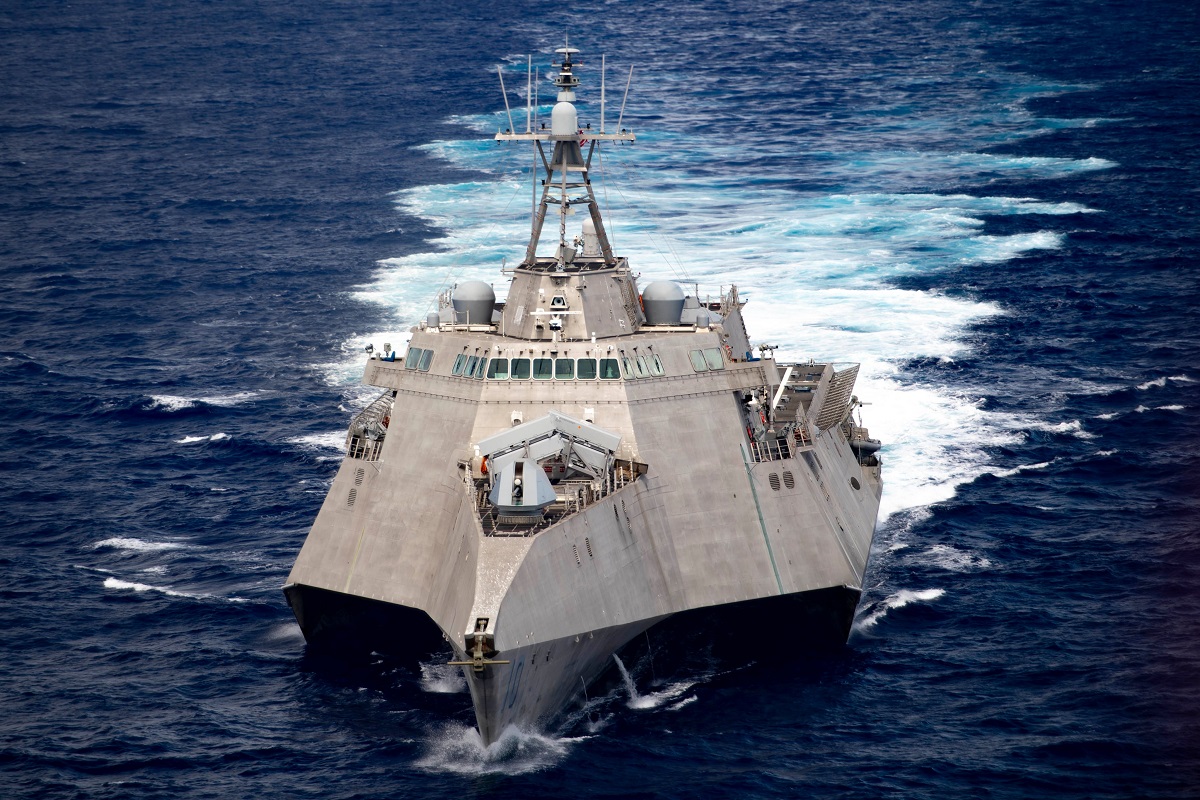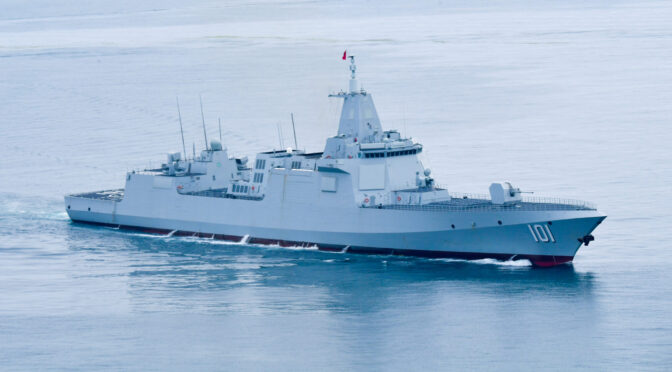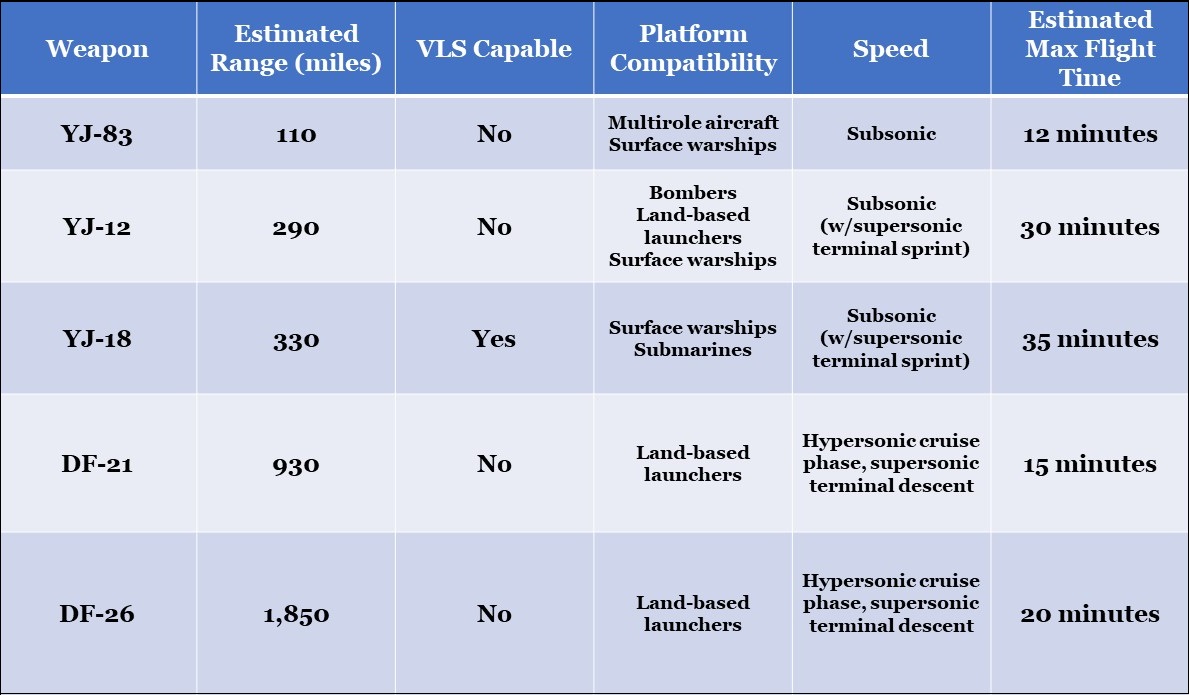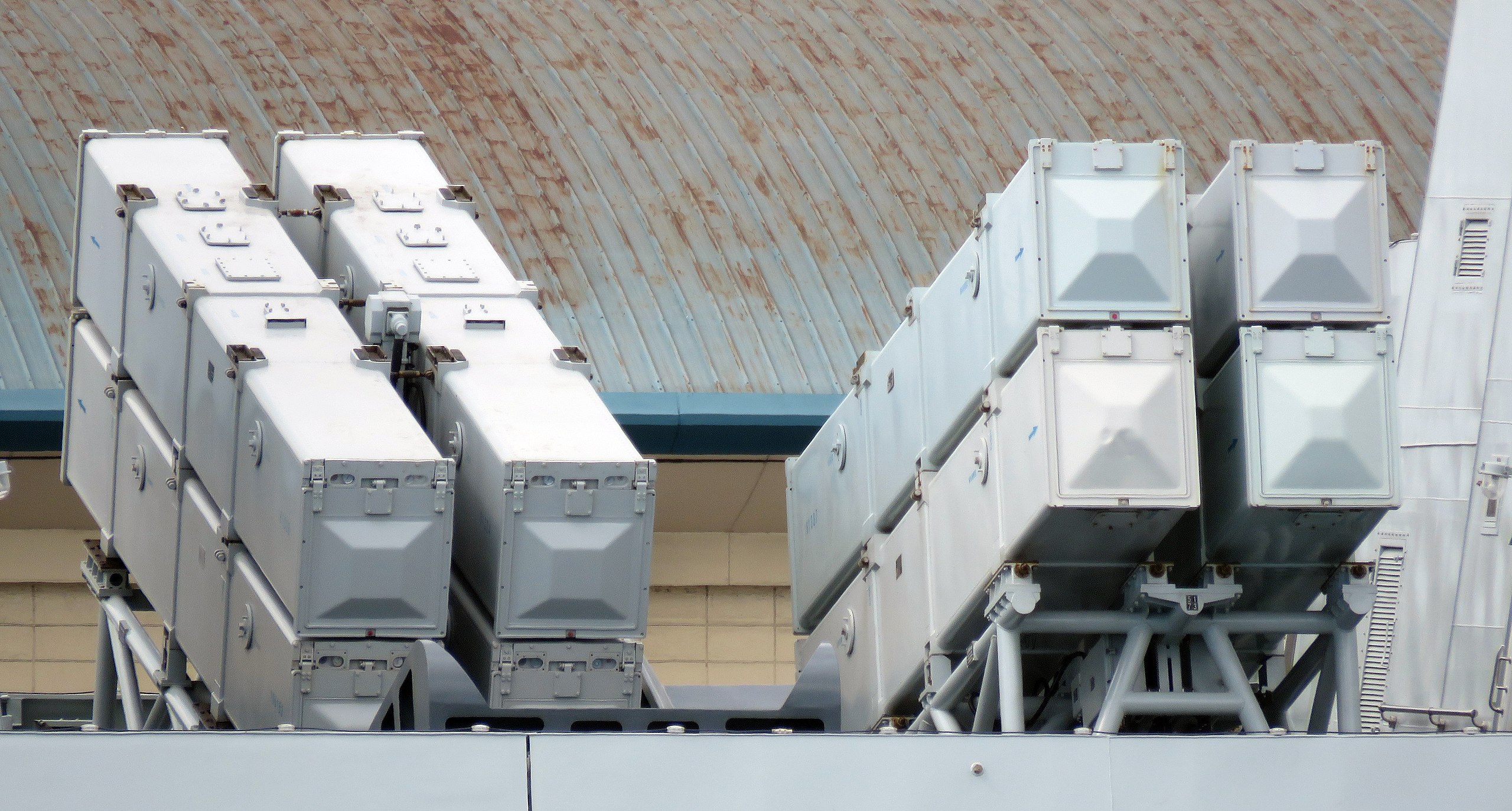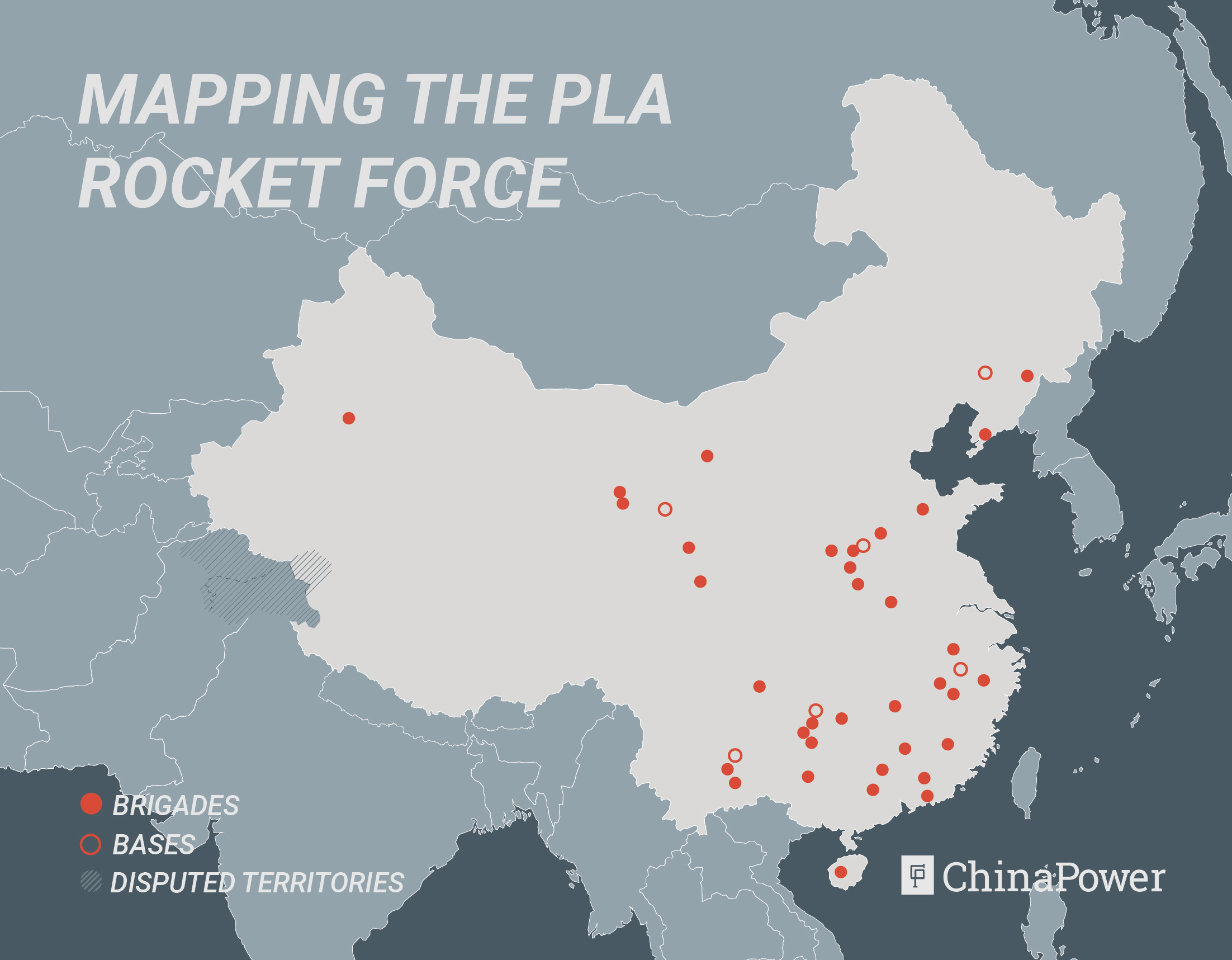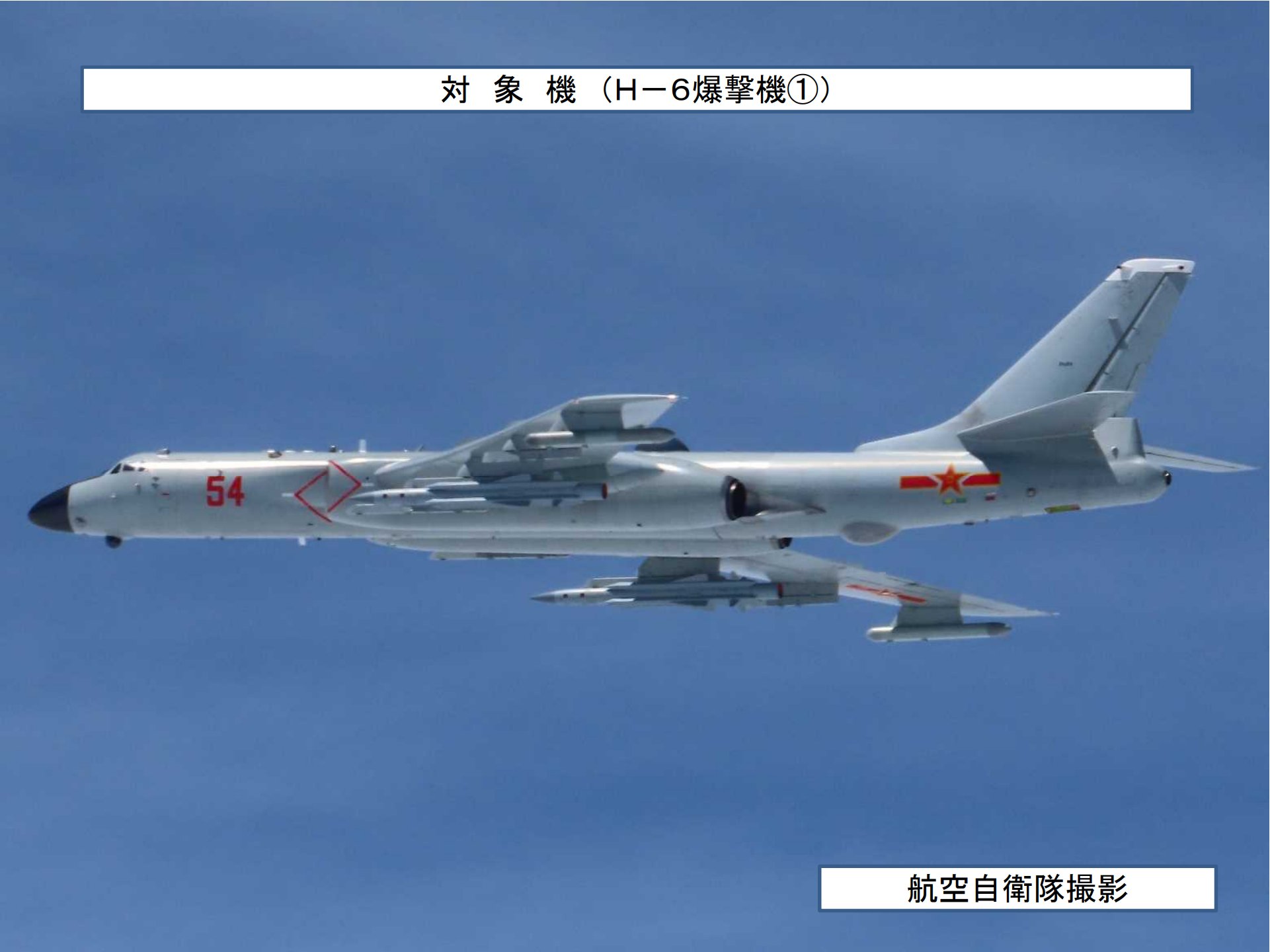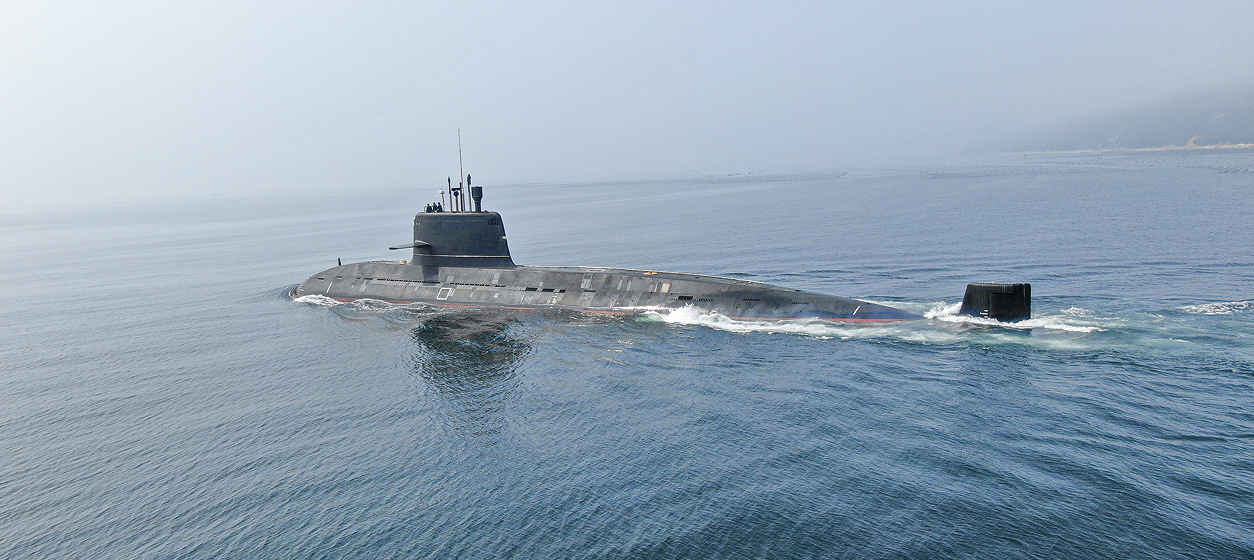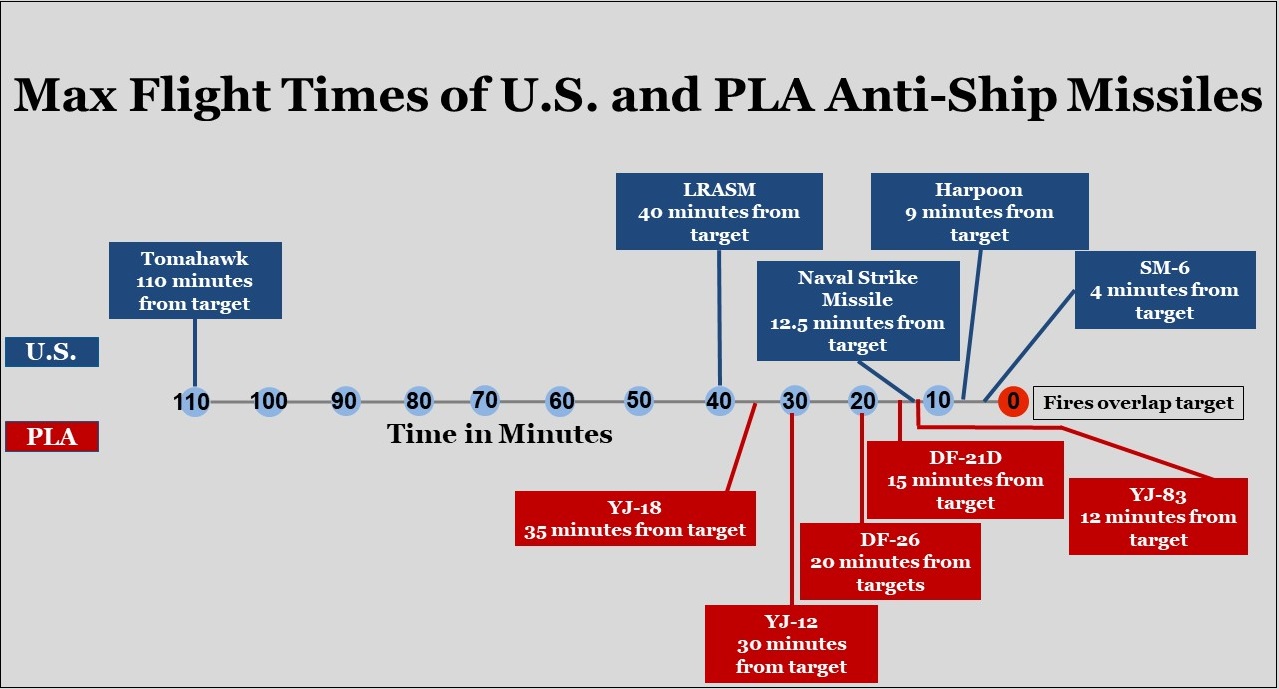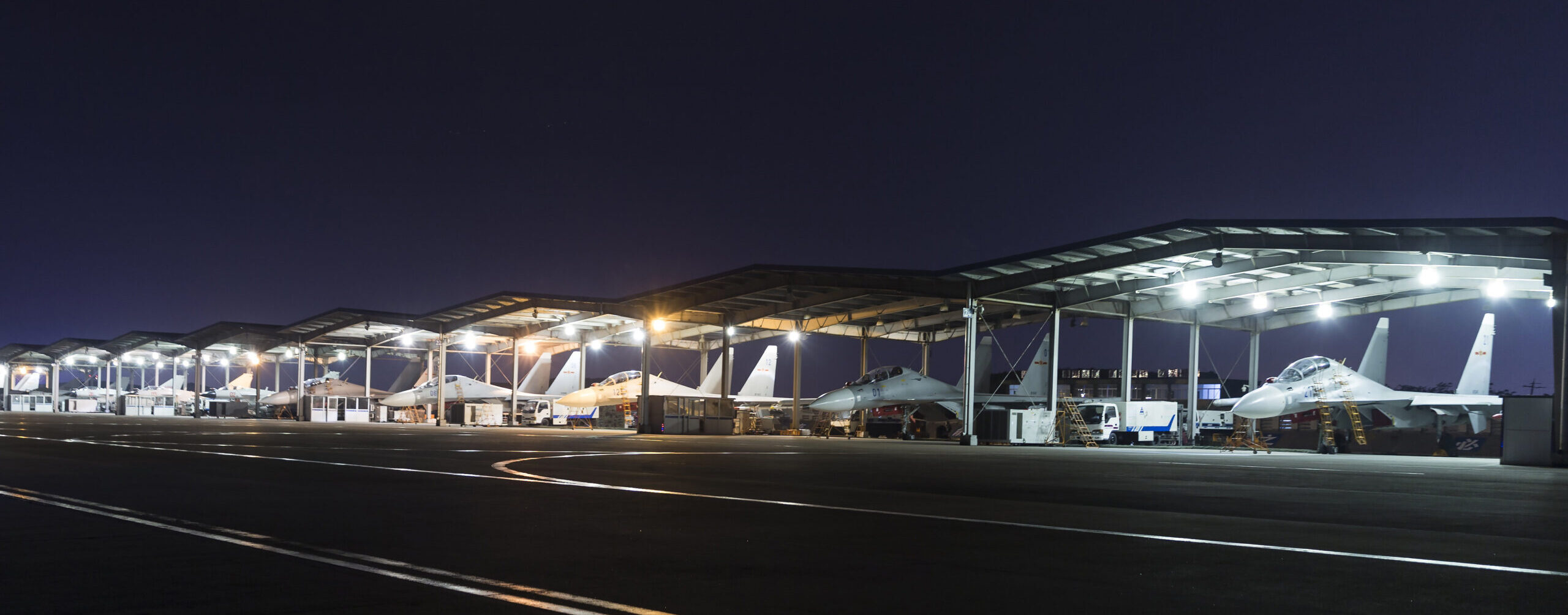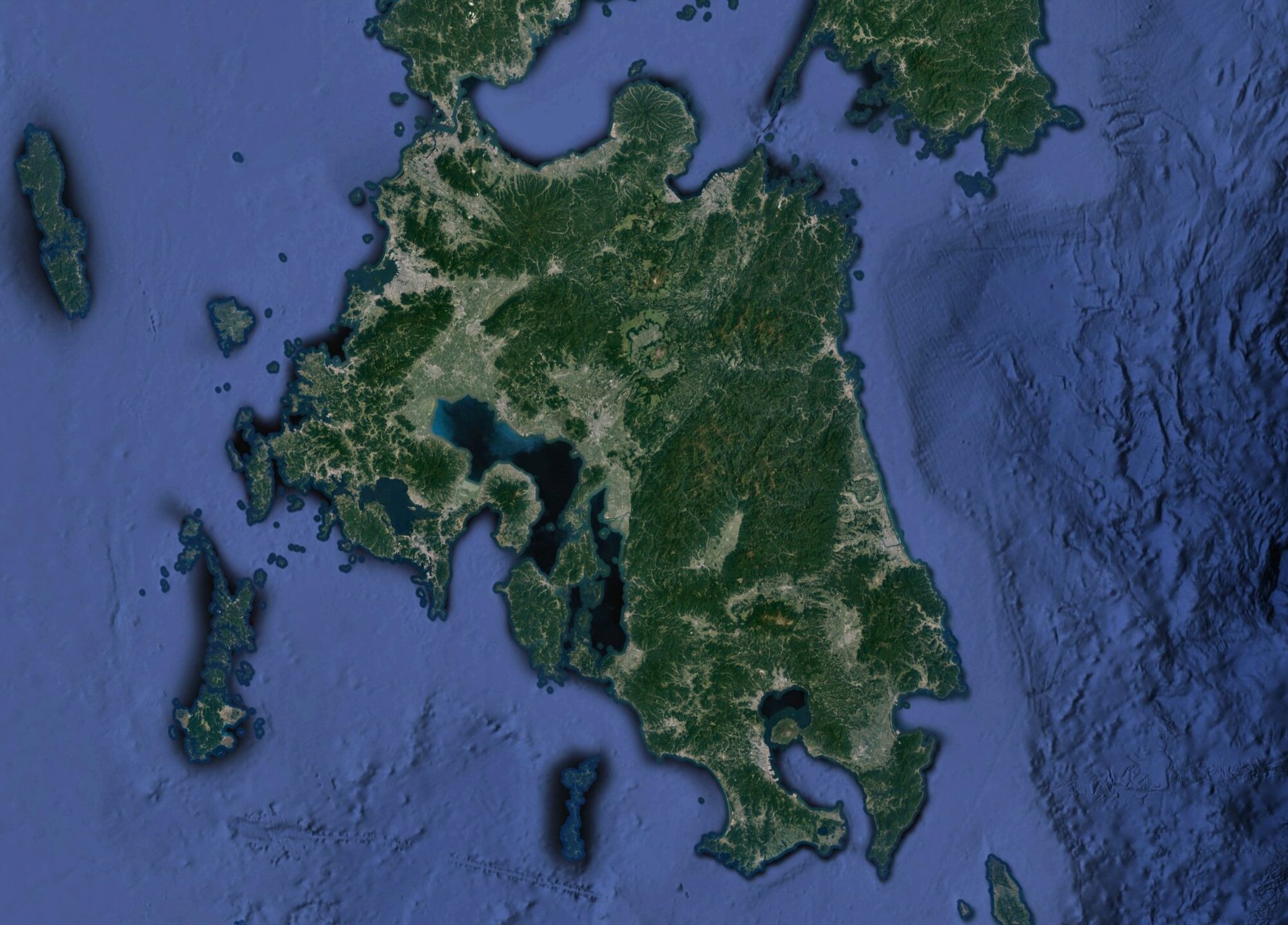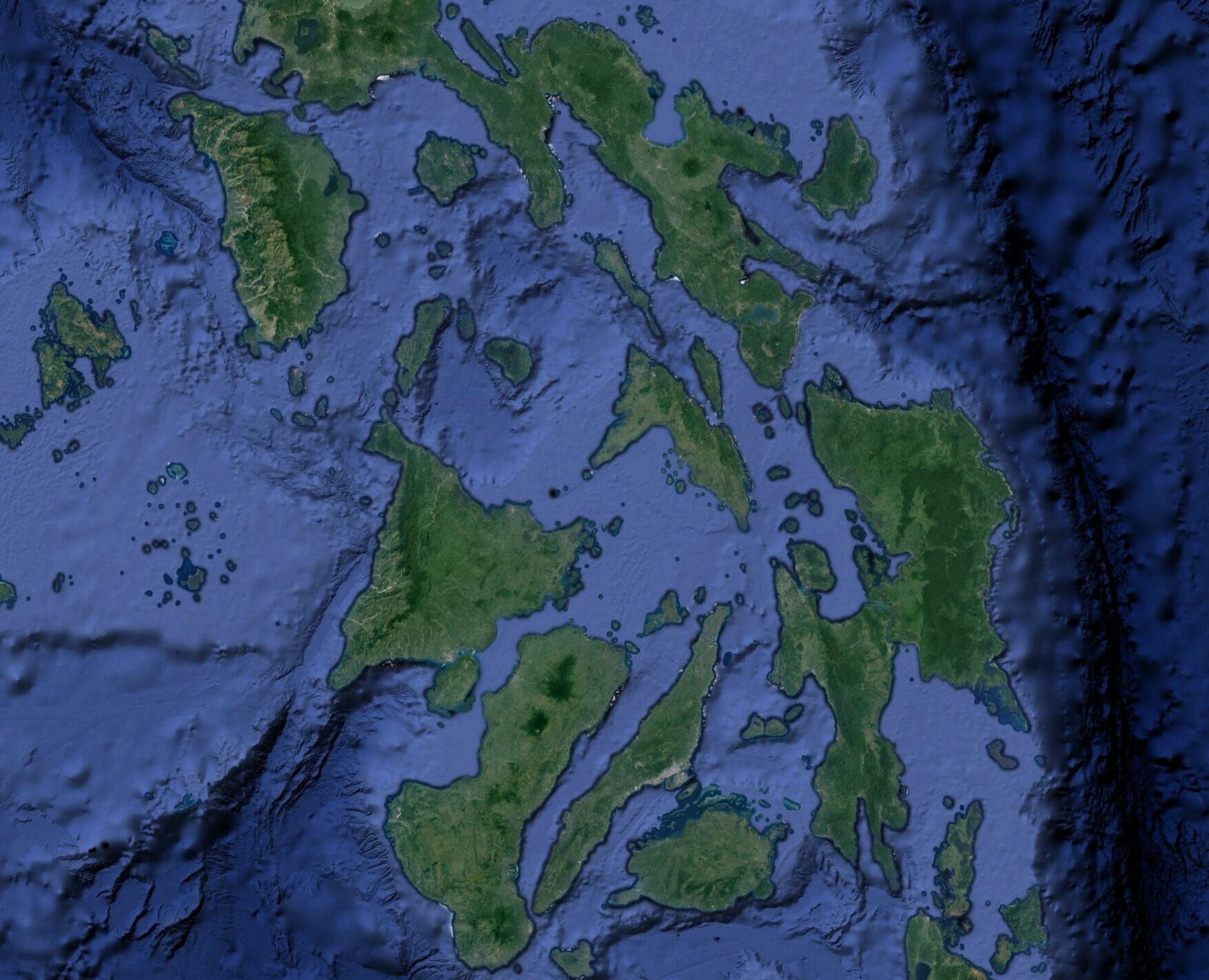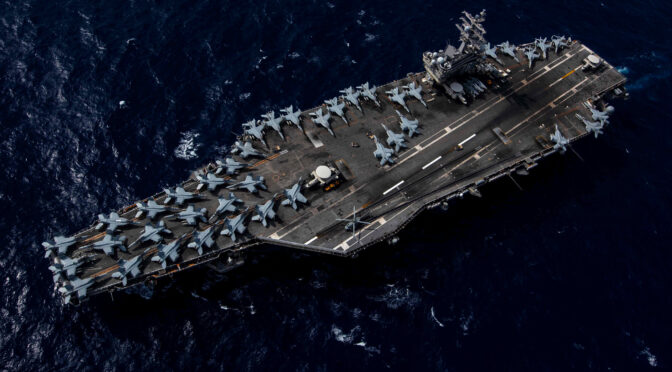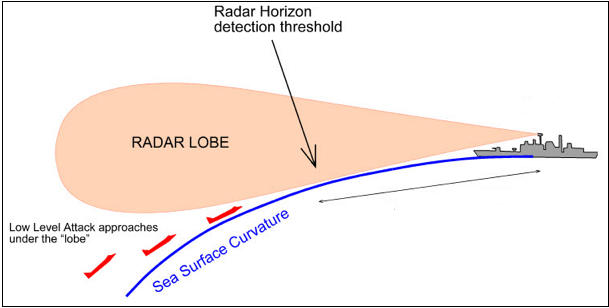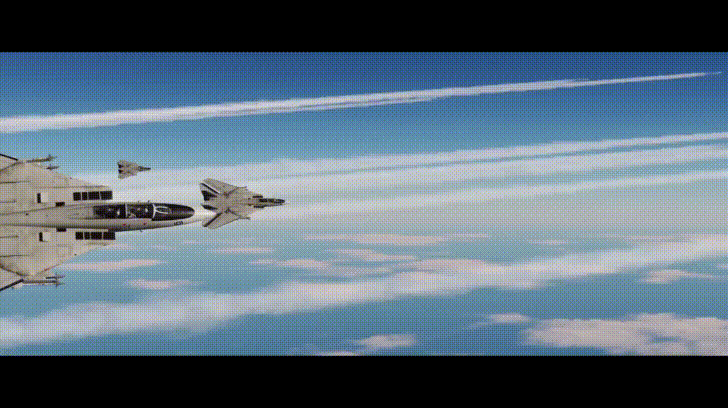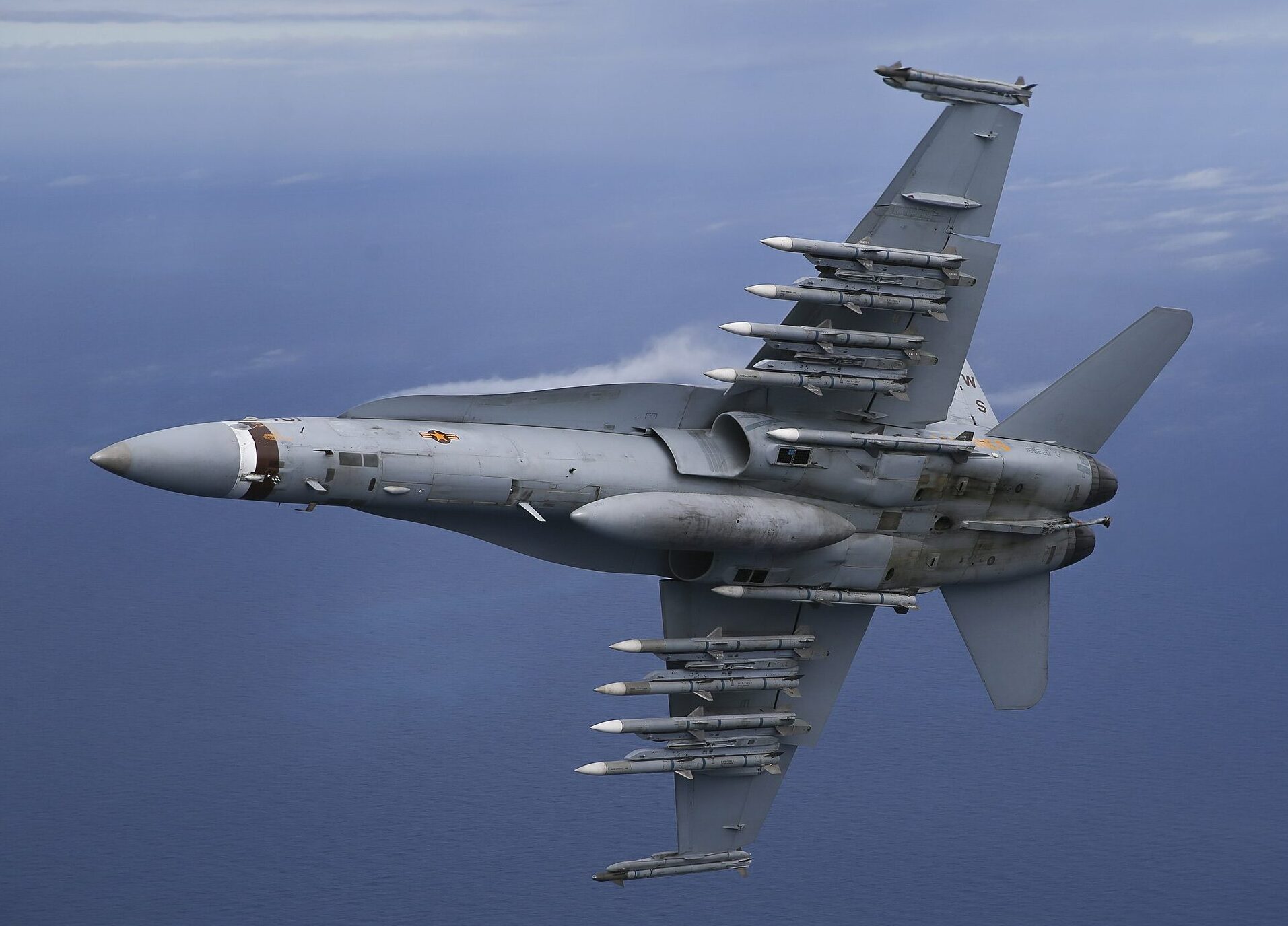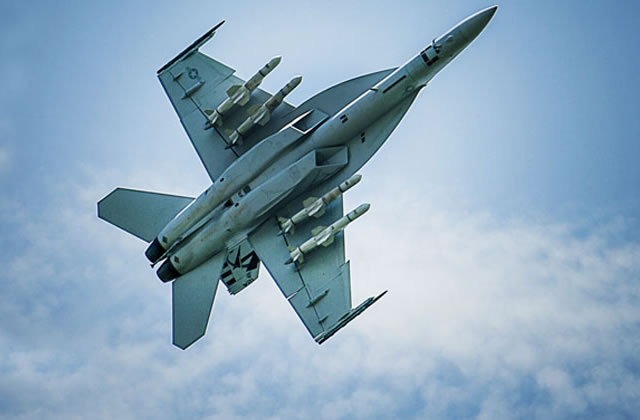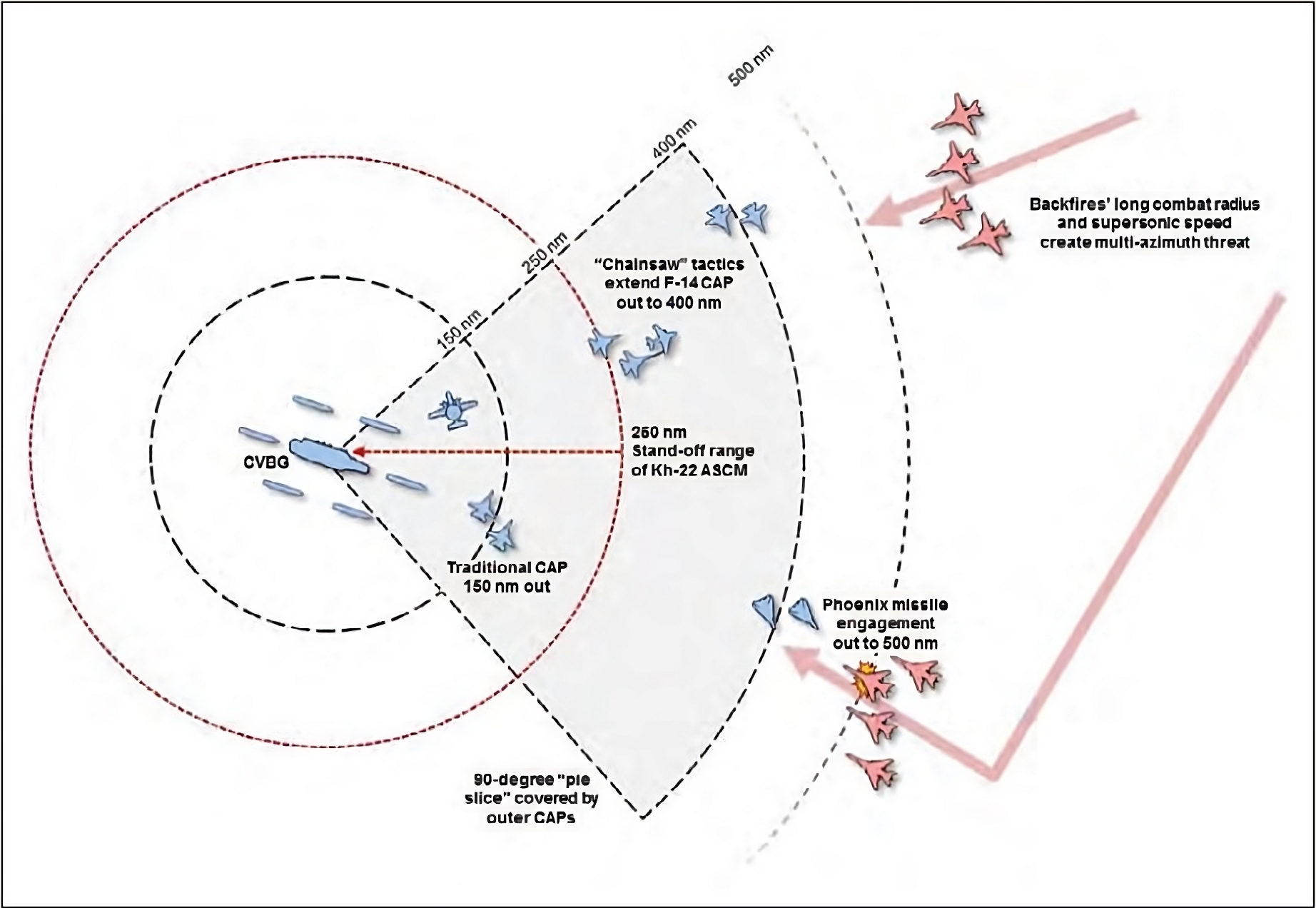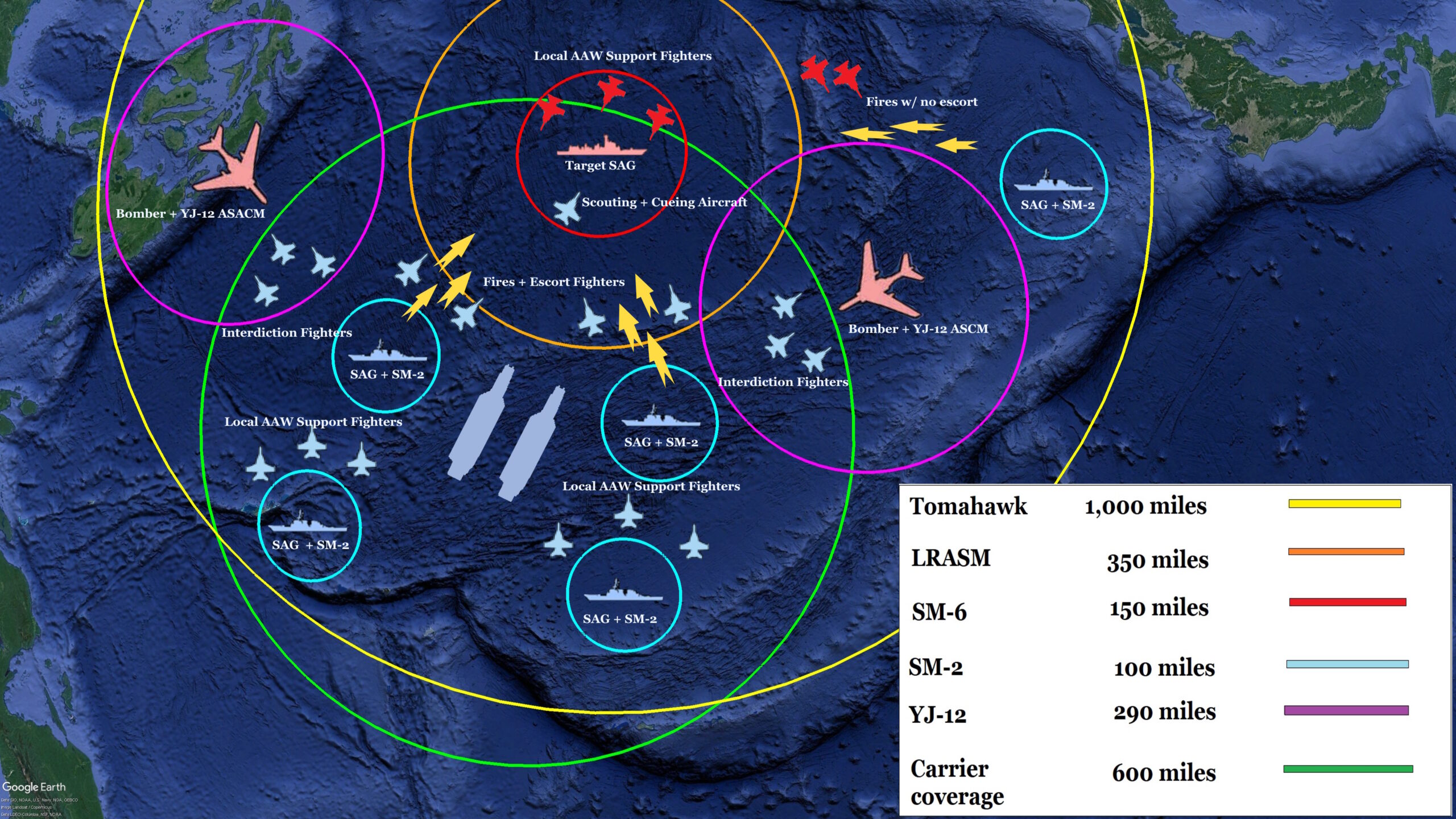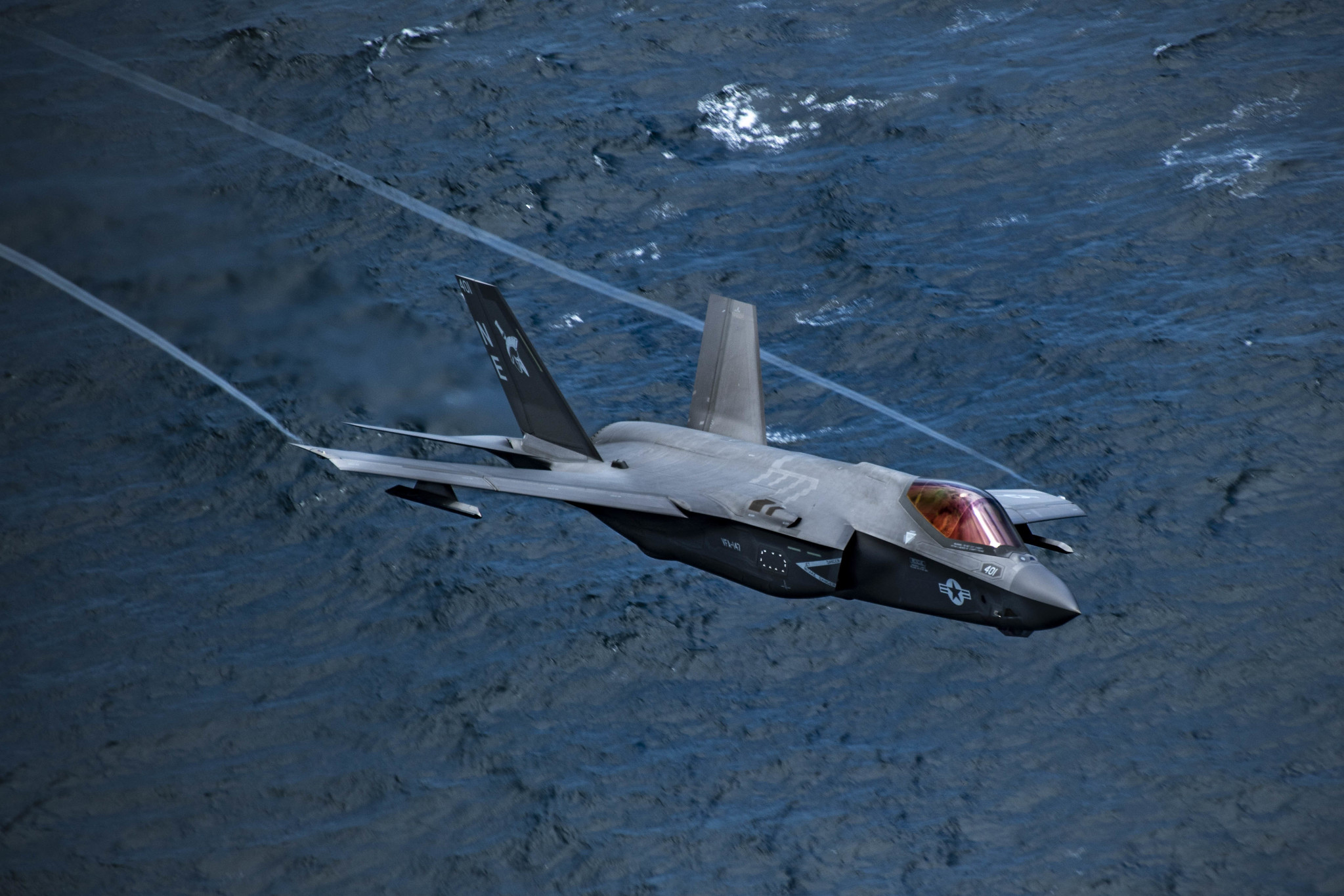Read Part 1 on defining distributed maritime operations.
Read Part 2 on anti-ship firepower and U.S. shortfalls.
Read Part 3 on assembling massed fires and modern fleet tactics.
Read Part 4 on weapons depletion and last-ditch salvo dynamics.
Read Part 5 on missile salvo patterns and maximizing volume of fire.
Read Part 6 on platform advantages and combined arms roles.
Read Part 7 on aircraft carrier roles in distributed warfighting.
Read Part 8 on China’s anti-ship firepower and mass firing schemes.
Read Part 9 on the force structure implications of DMO.
By Dmitry Filipoff
Introduction
Force development is the process of investigating the future of warfighting and aligning the preparations of a military along the lines of that investigation’s findings. If knowing how to fight could be described as knowing how to execute tactics, then force development is about how to get better at fighting.1 Yet force development is not just about creating viable tactics or proper crucibles for forging warfighting skill. It is about ensuring there is a high level of force-wide fluency on warfighting and a broad understanding of how to get better at fighting.
Force development serves a vital role in safeguarding a military from its own atrophy. A major symptom of institutional decay in militaries is when warfighters, especially those in the combat arms and unrestricted line communities, struggle to realize that their fundamental job is to be tacticians. If not consciously kept in check, creeping bureaucratic forces will gradually turn warfighters into administrators, maintainers, engineers, and other things that eventually eclipse their fundamental role of being tacticians, of being professionals that learn how to fight.
A prime imperative of force development is to preserve the fundamental principle that tactics are at the core of what any navy is and does, that tactics are the “soul of our profession,” as once described by Vice Admiral Art Cebrowski.2 Chief of Naval Operations Admiral Tom Hayward argued the same point in the introduction to the first edition of the seminal work Fleet Tactics by Captain Wayne Hughes, where he argued, “What is the naval profession about if not tactics, tactics, and more tactics?” A military service that loses sight of this fundamental principle of existence will have dysfunction radiate throughout its institutions. This is because tactics are not just mere details or minor actions, they are the ultimate logic that governs how fleets are destroyed in combat. Regardless of whether warfighters are aware of it, tactics are a central animating force behind much of what a navy does, whether it be strategy, force design, human resources, and many other efforts. So much of military policymaking is critically degraded when the warfighters do not have a good idea of what the fighting is going to look like, or of how to get better at fighting.
The force employment of a military will largely be a function of how good its force development can make it. A military’s ability to fully manifest a new warfighting concept will depend on how well its force development can take the abstract notions of the concept and convert them into genuine force-wide improvement in warfighting skill. As the U.S. Navy explores the future of distributed warfighting and naval salvo combat, it must be prepared to make major changes to how its force development institutions cultivate warfighting skill so the fleet can effectively evolve alongside the intensifying threat environment.
Force Development and the Major Engines of Change
Overarching warfighting concepts are often developed by specific groups such as fleet staffs, warfighting development centers, wargamers, and others. Compared to the broader fleet and the multitudes of deckplate warfighters, these groups are extremely niche staffs. Just because a warfighting concept has been developed by specialized groups and approved of by senior authorities is no guarantee that it will actually result in force-wide change. Major efforts have to be made to deliberately introduce the warfighting concept into the service’s primary engines of force development, and bridge the wide gap between the niche insight of the concept developer and the force-wide reality of the deckplate sailor.
The major engines of force development in a service are the primary mechanisms through which warfighting skill is developed on a force-wide level. These engines mainly include the exercise and certification regimes, training and readiness matrices and syllabi, schoolhouses, graduate education programs, and the tactical instructor programs of warfighting development centers. Tens of thousands of servicemembers are rotating through these mechanisms to learn about warfighting. If a warfighting concept generated by a niche staff is to stimulate genuine force-wide improvement, then the concept must be broken down into specific operational skills and challenges that are then administered through these major engines of force development. Syllabi must be revised, new certifications must replace older ones, and new scenarios should keep warfighting crucibles fresh and challenging.
The content of the warfighting concept must inform and align with the content of force development. Otherwise, the force will incur major risks in conflict when the content of its warfighting concepts and war plans are vastly different than what the force as a whole has actually been prepared to do.
This process of change has to be deliberate and measured. The aftereffects of introducing more tactics, doctrine, and capabilities into the major engines of force development are often not well appreciated, but these effects threaten to strangle progress. The downstream effects of introducing new things to force development are often more requirements, more administration, more maintenance, and myriad other burdens added to already stretched warfighters. The imperative to effectively master something new can be suffocated by the overflowing system of requirements and certifications, and where many of these requirements are a product of undisciplined bureaucratic accumulation.3 Failing to make deliberate tradeoffs will risk losing critical new warfighting imperatives amidst the crammed labyrinth that characterizes much of the U.S. Navy’s requirements and certification system. This overflowing system has forced combat training schedules to take the form of serialized one-off events, rather than focused series of multiple rounds that allow warfighters to flesh out specific skills and conduct extensive trial and error. The Navy needs to consolidate its overstretched focus so it can afford to go deeper in priority areas.
If the Navy is to seriously introduce the new force development efforts that are vital to making DMO and massed fires a reality, it will need to vigorously protect and guarantee time and focus for these efforts amidst the ocean of other demands that threaten to stifle these initiatives. Careful and deliberate tradeoffs must be made in defining what tactical skills and scenarios sailors should be prioritizing their time on, rather than simply adding to the system’s congestion.
One specific example of how force development tradeoffs can be made is in adjusting the amount of focus spent on building damage control skillsets versus air defense. Since it only takes one hit to kill a warship, if the offensive-defensive balance tilts even slightly in the attacker’s favor, then the result will be extreme overkill. This happens because naval salvo combat can consist of forces launching dozens of missiles at warships, so if a warship is going to take a hit, it is very unlikely to take only one. Damage control at that point will often be an exercise in futility. While sailors can certainly learn much about their systems through damage control practice, the force development implication of this brutal tactical reality is that much more preparation should be spent on preventing the ship from getting hit than learning how to save it.
That is one aspect of naval salvo combat that readily translates into deckplate-level force development implications. But the act of massing fires from across a distributed force is something that can happen on a theater-wide scale, which is a larger-scale scenario that can strain unit-level training methods, resources, and perspectives. While new studies and curricula are useful for teaching the broader picture, tactics are actions. The cultivation of tactical skill demands extensive hands-on application and learning-by-doing.
If mass fires are to become a mainstay tactic and skillset, then wargaming and Live, Virtual, and Constructive (LVC) events need to become a much more mainstream and higher fidelity experience for unit-level warfighters. Wargaming and LVC are key simulation tools that can help deckplate servicemembers experience warfighting on a much larger scale and understand how their piece of the fight contributes to broader success. Unit-level sailors can strive to understand how their long-range salvos will combine into a larger volume of fire against a distant target, and how the broader distribution or concentration of the force can be affected by their unit-level actions. They can learn to craft custom firing sequences and assemble massed fires against serious opposition in a variety of contexts. They can become more proficient in interpreting the situation presented in the broader common operating picture that goes beyond the scope of their organic sensors, which can also help them contemplate effective targets for last-ditch or standalone fires. They can develop a deeper understanding of how higher-echelon commanders think about naval salvo combat and assembling massed fires, which helps build a common doctrinal framework across the chain of command. By leveraging these tools, unit-level servicemembers can improve their fluency with these inherently large-scale warfighting methods.
Despite the fierce character of naval salvo combat and the high stakes involved, a warfighting imperative is often not strong enough on its own to compel change when the imperative must be operationalized by a bureaucracy. The major engines of force development need to be infused with clear professional incentives for warfighters to develop specific tactical skills and distinguish themselves as above average tacticians. The incentives for competitive promotion and assessment are arguably some of the strongest levers for fomenting change in any organization, and this holds true for militaries as well.
The introduction of new tactics and methods requires commensurate new criteria for assessing proficiency and rewarding tactical skill. But the specific nature of launching anti-ship fires challenges the ability to craft stirring professional incentives for the tactical actions that are at the heart of massing fires.
There may be relatively few distinguishing factors when a unit is simply one platform out of many that is launching anti-ship missiles at distant targets. The act of launching fires at forces that are far beyond the limits of one’s organic sensors can substantially reduce the scope of decision-making and tactical skill to be exhibited and assessed at the unit level. Launching anti-ship fires may be far less tactically distinguishing or exciting than the scope of tactical skill a lone fighter pilot can display in a dogfight, or a submarine officer can exhibit in setting up a torpedo strike. Serving as a missile magazine to be cued by someone else’s firing decisions may hardly make for provocative debriefs or in-depth assessments of tactical skill at the unit level. These types of challenges can cause warfighting establishments to undervalue critical tactical tasks because they offer little opportunity for warfighters to distinguish themselves from their peers and challenge professional assessment mechanisms. As a result, military bureaucracy can limit the amount of time training and exercising these skills.4
Here is where wargaming and simulation can come together with assessment criteria and professional incentives. Because wargaming and LVC can allow deckplate-level warfighters to practice the large-scale tactics of massing fires, it can also provide a venue where warfighters can distinguish themselves professionally, and be assessed on more complex matters of tactical skill compared to simply launching contributing fires. Wargaming and LVC can also offer settings where Sailors can operate their individual platforms in simulated network-contested environments, where they can demonstrate how they would take the initiative, such as by assembling massed fires on a local basis or launching standalone attacks as an isolated unit.
The U.S. Navy will have to make major changes to its force development to promote more opportunity for warfighters to tactically distinguish themselves from their peers and spark their competitive spirit. But a system of certification that aims to train warfighters to the same baseline standard will struggle to provide this opportunity. The U.S. Navy’s ability to offer meaningful crucibles for warfighters to distinguish themselves is also severely challenged by its deeply ingrained habit of artificially guaranteeing victory in combat exercises and deliberately handicapping opposition forces.5 These fundamental and far-reaching flaws will strongly constrain the Navy’s ability to discover and cultivate its best tacticians, as well as impair its ability to have a rigorous process of investigation undergirding its force development. These self-inflicted flaws have already rendered many prior Navy warfighting concepts into unrealized and underdeveloped aspirations. These flaws will continue to challenge the Navy’s ability to manifest any warfighting concept that can be durable enough to withstand the chaos of war.
Ultimately DMO should provide the impetus to reform not just the content of the Navy’s force development, but also its character.
New Force Packages for DMO
The U.S. Navy is attempting to manifest DMO with a relatively concentrated force structure of high-tonnage warships. It will need to revise its current force employment and force packaging to be more distributed in the near term. As the Navy transitions toward DMO, it needs to consider how it may reorganize its existing force structure to better manifest the concept.
The relationship between force structure and force employment is closely related to the standard force packages of a service and the warfighting concepts that animate them. In the case of the U.S. Navy, the Composite Warfare Commander (CWC) concept has animated its carrier strike groups and naval formations for years.6 Regardless of the many concepts that have been developed over time, the CWC concept is what the Navy has actually been putting into practice on a force-wide level, and it forms a major point of departure for naval force employment. Countless strike group staffs and wardrooms have had their visions of warfighting heavily shaped by this concept. Consistent application of CWC over the years has molded a critical form of operational muscle memory that pervades the U.S. Navy as an institution.
The introduction of DMO should warrant a deep examination of new formations, force packages, and tables of organization that will embody the new concept. Historically, militaries will modify these aspects of their organization in relation to changing perceptions of the future of warfare and force employment. When reforming for great power war, these changes have heavily focused on defining the proper echelon for integrating combined arms capability.7 This has often resulted in pushing the integration of multi-mission, combined arms capability down to lower-level units, while also being mindful of not overwhelming lower-level commanders with too much span of control. As they push combined arms integration downward, militaries have also gone upward in designating a larger-scale formation as the primary standard unit of control when emphasizing focus on great power war. For example, where artillery and anti-air fires may have been held at the brigade commander level, now the company commander can direct these fires; where the brigade was once the primary operational unit, now the division is the primary unit.
The Navy can consider similar changes to its organization. New force packages can encourage an accompanying revision of the command relationships and operating concepts that animate the formations. New force packages provide a valuable impetus and point of departure for initiating fresh force development efforts.
At first sight, DMO may encourage an amorphous vision of force packages, where units can flexibly plug-and-play at will across a dynamic battlespace. A distributed force will gain a significant amount of resilience if its lone units can seek one another out and dynamically come together to apply effects on a local basis, rather than be wholly dependent on higher-echelon commanders to organize them. But while this hypothetical flexibility is desirable, in reality it can lead to an undisciplined and unstructured vision for how a distributed force may actually be wielded. It may leave far too much to chance and assume too much about the ability of individual units to meaningfully integrate on the fly. Instead of a flexible and resilient force, the risk is the spontaneous creation of disorganized pickup teams that will have little time to build common understanding in the midst of a fight. That common understanding may prove crucial to success, especially for methods that require careful harmonization, including emissions control, air defense doctrines, and last-ditch firing protocols. One of the hard WWII lessons the U.S. Navy paid abundantly for in blood is that combined units need time to develop into genuinely integrated force packages before being sent into battle.8
As a potential new DMO force package, consider a force of two destroyers supported by a squadron of carrier aircraft. Half of the squadron remains in the local vicinity of the destroyers to defeat sea-skimming threats well before they break over the warships’ horizon, and to provide early warning such as for air defense and last-ditch fires. The other half of the squadron is far forward of the two destroyers, and conducts scouting, counter-scouting, and bomber interdiction. The forward element also helps cue warship salvos toward targets, inputs retargeting support to the salvos, defends the salvos from aviation threats, and assesses salvo effectiveness against the target. This forward aviation element is the primary actor in contesting aerial and information superiority in the critical space between opposing fleets. If those forward aviation units are under heavy threat by opposing aircraft, they can pull behind the surface warships and leverage their air defense capability. The roles conducted by the aircraft kept closer to the destroyers can be assigned to F/A-18s and an E-2D. The forward roles are ideally conducted by F-35s, with their longer range and robust sensor fusion capabilities.
This force package of two destroyers and a squadron could be termed a surface strike group (SSG) and be a standard unit of a distributed naval force (Figure 1). It represents the lowest level at which carrier aviation and surface warships could be fully integrated for combined arms naval warfighting. Through its warships, this force could conceivably field up to 80 anti-ship missiles in its launch cells. This makes for a considerable amount of magazine depth that could allow the force to steadily persist and preserve force distribution as it fires small but meaningful increments of contributing fires. If network links degrade or some other circumstance isolates the surface strike group from the broader force, it will have a decent amount of organic capability to fall back upon, it will have preserved vital combined arms relations, and it will retain significant magazine depth as a standalone unit.

Multiple CNOs have now called for a renewed emphasis on fleet-level warfare.9 A renewed emphasis on fleet-level warfare requires a fleet-level force package. The parent force package of the Surface Strike Group could be the principal fleet-scale maneuver element, a hypothetical Fleet Strike Group (FSG) that would be larger than a carrier strike group. It could consist of the combined forces of about two carrier strike groups, divided into four surface strike groups with two destroyers each, and four destroyers assigned to escort the two carriers (Figure 2). The carriers are protected by roughly four squadrons of aircraft, with the other four squadrons assigned to the surface strike groups, which are the primary striking arms of the Fleet Strike Group for generating massed fires.
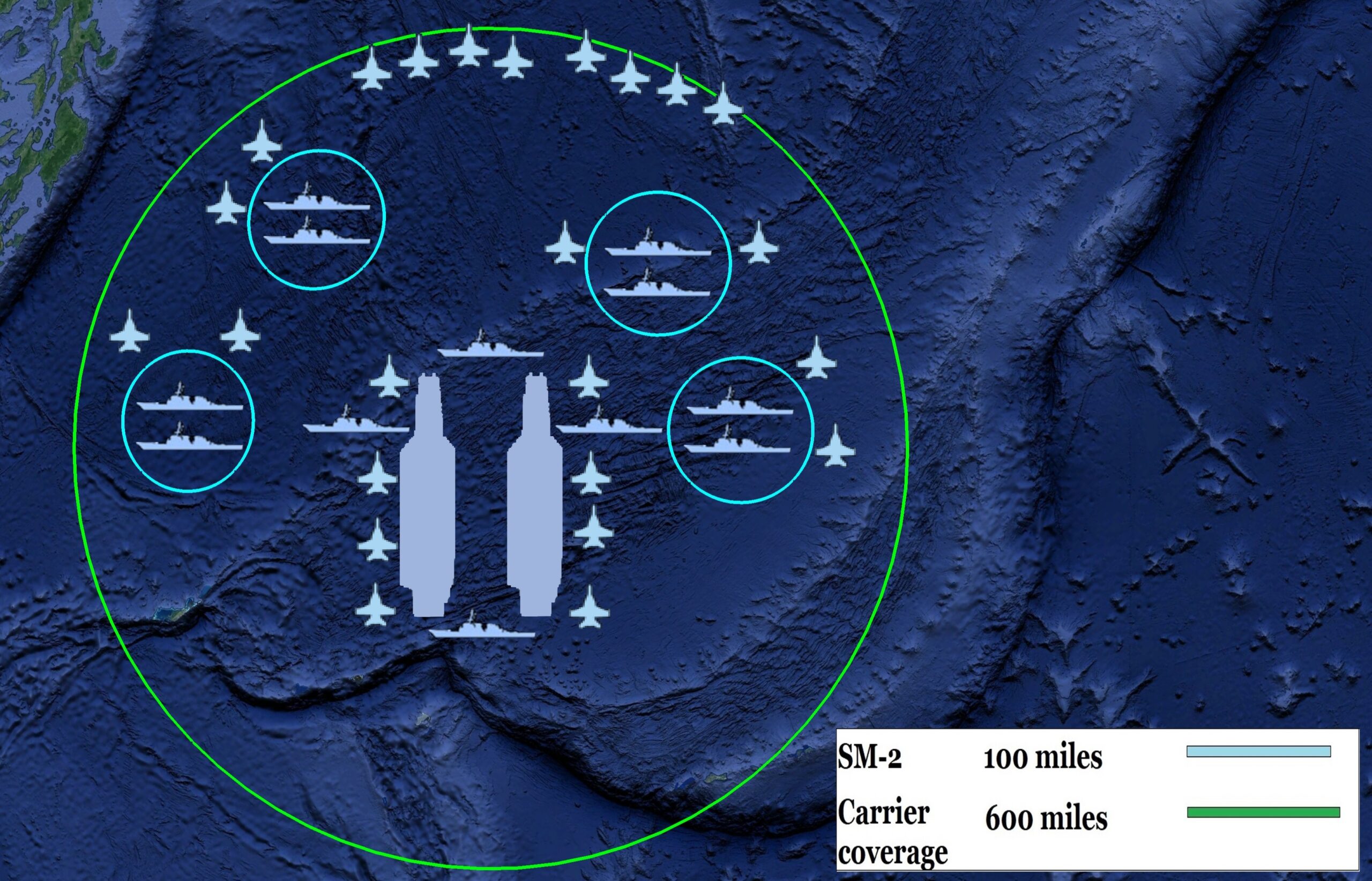
The surface strike groups may be oriented in various dispositions relative to the carriers, but must not exceed the ranges required to have confident aviation support, and not exceed ranges that would stretch them too thin to combine their fires against a shared target. A force package does not always imply a specific disposition, but it provides a clear point of departure for multiple arrangements of forces while maintaining a coherent command structure and concept of operations.
These force package concepts illustrate the critical constraints of organizing a distributed fleet. Warships can only disperse so far from one another before they are spread too thin to effectively combine fires. Surface warships will substantially increase their risk if they venture beyond the range of aviation support, and they would have more flexibility of maritime maneuver if that aviation support came from carriers instead of airfields. But carrier aviation can only travel so far and remain on station for so long. Carrier aviation must also maintain enough reach and capacity to strongly contest the aerial battlespace between opposing fleets, and secure the critical scouting and informational advantages that come with earning air superiority in this area. Yet carriers cannot be pulled too deep into the battlespace themselves, or else suffer increased risk.
These critical factors of mutual support bind the extent of distribution and help define the divide between what is usefully distributable versus what is unfavorably stretched thin. Standardized force packages capture these critical relationships and constraints, and provide a framework to work within them.
These force packages formalize other essentials of DMO. They formalize a closer tactical relationship between aviation and surface platforms, who will need a tight-knit doctrinal relationship at a level below the traditional strike group. It establishes a new fleet-scale unit that is larger than a carrier strike group, both in terms of the number of platforms and in the scope of its applications. It also establishes a subordinate lower-echelon unit that is credible enough to pose a threat on its own even if the force fractures or disaggregates. These fundamentals can provide an enduring basis for designing force packages regardless of their specific composition.
Standard force packages provide a valuable frame of reference for what forces can coalesce or disaggregate into, which is a vital part of DMO. If a distributed force fractures into individual units and force concentrations, many units may naturally seek each other out to pool their capability and broaden their awareness in a bid for local overmatch. But as standalone units gather themselves, they may unwittingly create a force that is overly concentrated. Standard force packages can provide a valuable frame of reference by defining a ceiling of tolerable concentration or dispersal. Forces may use this frame of reference to independently distribute or converge if they believe they have overly concentrated or stretched themselves. It is critical that effective concentration and distribution is not just something imposed on a force by higher-echelon command, but something that lower-echelon units can effectively self-organize into through shared doctrinal understanding.
The frame of reference offered by a force package can also encourage isolated units to prioritize the regeneration of combined arms capability. In the case of distributed warfighting, isolated aircraft would know to seek out warships to leverage their magazine depth, and warships would seek out aircraft to leverage their greater situational awareness. As isolated forces seek out one another and combine into force packages, they can not only have a sense for judging appropriate concentration, but also a sense of judging proportion between the combined arms.
This frame of reference also makes hard tradeoffs more doctrinally acceptable. A core defensive goal of distribution is to minimize losses when they are taken. A core offensive goal is to manipulate this concern to compel opposing forces to stretch themselves thin. The threat of accurate firepower can force units to sacrifice their ability to provide mutual support as they widen their distribution to try to minimize potential losses. If a force package is judged too concentrated and must distribute, the diminishing availability of combined support will be better understood as a deliberate tradeoff rather than a reckless omission.
As much as an assortment of smaller units attempting to integrate across a battlespace can confuse an adversary, it can also confuse a force’s own commanders. The desire for open-ended flexibility must be balanced against the need for coherence, and standardized force packages are a critical mechanism for creating coherence of forces. But the organizational coherence that force packages offer can certainly be a liability. The predictability of organization for oneself also makes it more predictable to the adversary. This predictability can lend itself toward the speedier massing of fires, both from a force and against it. There can be a direct connection between using organization to reduce the command-and-control challenge of wielding a distributed force, and reducing the challenge to the enemy’s decision-making. Commanders must weigh the benefit of coherence along these lines.
New force packages can serve a critical organizational function in moving force development forward and strongly emphasize a service’s commitment to transformation. In the case of the U.S. Marine Corps, the new Marine Littoral Regiments are a major embodiment of that service’s concrete commitment to new operating concepts.10 By creating this new force package, certain combinations of capability and cross-community relations were formalized and obligated. These relationships were then cultivated through shared force development and put into practice in exercises and elsewhere.11

If the U.S. Navy wants to make DMO a reality, one of the most powerful steps it can take is to commit to new force packages. This can send an especially strong signal to its competitors and its own organization that real transformation is coming.
Developing Doctrine for DMO and Massed Fires
At first glance, the tactics of massing fires could easily lend themselves to heavily scripted methods, preset responses, and automated decision aids. Algorithms and playbooks will surely serve an important role in speeding the coordination of available firepower into salvos against shared targets. But the fundamental importance of subjective human judgement cannot be eclipsed by these factors. Naval force development on DMO must focus heavily on cultivating the human skills and decision-making that undergird mass fires. Developing a common doctrinal understanding will be vital toward employing this form of warfighting that depends so much upon shared awareness and coordination.
Doctrine does not only consist of official publications or standard responses. Doctrine is best understood as the implicit and subjective visions of how to fight that warfighters subscribe to.12 Doctrinal development should principally focus on creating shared expectations in the minds of warfighters of how massed fires function and why.
The doctrine of massed fires will need to carefully govern how release authorities control the employment of various weapons. These mainly concern the circumstances under which offensive and defensive weapons are to be retained, delegated, or seized by various authorities. For massed fires to work, the release authority for anti-ship weapons cannot often be in the hands of the unit-level commanders of individual platforms except in highly specific and threatening situations. A higher-echelon commander or a commander with a higher degree of situational awareness will need to have the authority to reach into the magazines of various assets to assemble a volume of fire from the available options.
Because of this, there are few concepts that have as much potential to undermine massed fires than that of mission command and the initiative of the subordinate. Mission command has been defined as “the conduct of military operations through decentralized execution based upon mission-type orders…Successful mission command demands that subordinate leaders at all echelons exercise disciplined initiative and act aggressively and independently…”13 If each individual platform decides to launch its fires independently, then the force will often fail to muster enough volume of fire to overwhelm targets and it will suffer disproportionate weapons depletion across its units. The evolving distribution and concentration of the broader force will pitch and roll without much consideration for larger consequences, and many higher-order designs and intentions will be at the mercy of spontaneous, local-level developments. It is unclear if a distributed force that grants wide-ranging independence to its many individual units can be meaningfully wielded as a coherent “fleet.”
The principles of mission command and the initiative of the subordinate are often couched in terms of seizing fleeting targets of opportunity.14 But the ability to fire quickly on independent initiative should be tempered by the challenging requirement of assembling enough volume of fire. Totally delegated release authority can lead to premature and ineffective attacks, where it may be of little use to have an individual unit fire on a target of opportunity if it ends up wasting missiles because it cannot muster enough volume of fire. The requirement to achieve enough volume of fire to hit a densely defended naval formation changes the definition of what actually makes for a viable target of opportunity.
Relying on individual initiative and mission command can certainly result in a higher tempo of decisions and unit-level actions, but this is not an inherent advantage if those decisions and actions are not operationally effective. Having a higher tempo of decision-making does not always guarantee a higher quality of decision-making. A force that patiently musters its missile firepower for a single strong blow against a naval formation may often prove to be much more effective than a force launching numerous individual blows that are too weak on their own to overwhelm the adversary. Initiative of the subordinate can enable self-defeating impulses in a form of warfare that demands a significant measure of coordination to muster a minimally viable amount of striking power. Given the requirement to build enough volume of fire, many unit-level leaders will have to exercise tense patience rather than sharp initiative, even if they have all the targeting information they need to take their personal shot at the target.
The concept of delegating authority for the sake of taking advantage of fleeting opportunity in the battlespace cannot be blindly advocated as an enduring theoretical good. The successful application of this principle depends on specific tactical context, and it can clearly be self-defeating in many situations. Having a wide variety of distributed units prosecuting their local engagements with great independence assumes a theory of success where broader victory is the product of accumulating many smaller wins. But it is unclear how well this construct applies to the unique nature of high-end naval warfare, which has historically tended toward highly centralized tactical decision-making, large-scale pulses of fleet-destroying firepower, and extremely dense concentrations of capability. To unconsciously apply these principles without operational context is to strip away many of the potential benefits of massed fires.
Therefore higher-echelon commanders will naturally need to maintain some sort of doctrinal grip on the offensive anti-ship loadouts of many units if they are to harness their potential for massed fires. The same can hardly be true for defensive doctrine. The sudden nature of defending against anti-ship salvos or submarine attacks involves highly time-sensitive decisions. Doctrine statements that are pre-programmed into combat systems need to be able to automatically engage defenses to give warships a fighting chance of survival against incoming salvos. Therefore the release authority for defensive capability will have to naturally reside at a much lower level of command.
But unit-level commanders will still need some authority to independently launch their offensive missiles in certain situations. The potential of last-ditch fires means commanders need to exercise subjective judgement about their tactical situation and know when it warrants them firing off their weapons without higher-level approval. Commanders who perceive they are on the verge of detection or destruction will need to be afforded the discretion to do what they can under extreme circumstances. A similar logic applies to operating within degraded network environments. If adversaries have effectively damaged trust in networks and communications, then commanders may hesitate to believe what the networks are telling them. If commanders are unsure if their higher-echelon leadership can reach them to issue firing orders, they may feel compelled to take the initiative in launching fires themselves.
The doctrinal implications of who exactly organizes massed fires in what operational context deserve serious emphasis in force development. Joint commands, fleet staffs, and warfighting development centers need to design doctrinal schemes of release authorities for massed fires on both force-wide and unit-level scales. Commanders at all levels need to understand the distribution of these release authorities for various weapons and how the scope of these authorities can change with specific circumstances, such as heavily degraded networks or low-emission postures. Certain circumstances that make it challenging to mass fires from widely distributed assets can trigger fallback schemes that delegate release authorities to individual units and force concentrations.
But massed fires may be unworkable if the joint fires targeting process is too bureaucratic and rigid to be applied in a chaotic warfighting environment.15 While there are certainly many considerations that deserve to be factored into mass fires, the joint fires process should be prepared to expedite procedure for the sake of speeding decision. In a combat environment that is being heavily shaped by naval salvo warfare, custom firing sequences will need to be quickly designed to meet emerging needs. This is especially critical for the time-sensitive methods that help a force preserve its capability while under heavy fire, methods such as interruptive strikes against the adversary’s active firing sequences, or adding fires to the last-ditch salvos of dying units. Speed of decision is vital to winning in naval salvo combat, but an overly bureaucratic joint fires targeting process could easily confer major decision-making advantage to the adversary.
Lone units may not care much for official procedure when they are facing imminent destruction at the hands of incoming salvos. Unit-level commanders need to know how to craft an effective last-ditch firing protocol and have the subjective judgement to know when to trigger it. Commanders need to know how to assess the signature of an inbound volume of fire, judge the offensive-defensive balance, and decide if they are unlikely to survive. They must also have the skill and nerve to know when not to launch last-ditch salvos, or otherwise risk being provoked into wasteful fires.
Effectively practicing last-ditch fires will be less a matter of preventing unit destruction and more about having commanders smartly deploy a custom last-ditch firing protocol in the context of what information they had at the time. Scripted solutions and automated decision aids will not be enough to forge the prudence needed in this crucial battle of nerves. The U.S. Surface Warfare community in particular must cultivate this judgement in its warfighters through exercises and simulations that impose the last-ditch firing dilemma, but where warfighters do not know in advance whether they are expected to survive.
Developing doctrine for last-ditch fires is critical for ensuring archers are not destroyed before they can discharge their offensive firepower, and ensuring that valuable weapons inventory is not lost before it can make some contribution to the fight. Otherwise a force under fire will lose its weapons as it loses its platforms, and crews will be deprived of their chance to offer a final parting shot to the adversary. The extreme circumstances that surround last-ditch choices create a demand for extensive doctrinal development so that warfighters can be ready to make the most of what may be their final moments.
The Joint Element and the Role of Fleet Commanders
The act of massing fires is an inherently large-scale, combined arms, cross-service function. The joint contours of this capability are already becoming apparent, with all of the services now procuring anti-ship missiles and getting into the mission of sinking warships.16 While it will take at least another decade for them to procure enough weapons to be able to truly mass fires, all of the services must focus more force development on the anti-ship mission. The extent to which service kill chains can be effectively linked in a contested battlespace can determine the true extent to which massed fires can be brought together from across the joint force. Otherwise operational methods may default to standalone fires from service-specific forces. The force development of massed fires must occur through critical joint and service command structures, and the nature of these structures puts fleet commanders in a prime position to refine these concepts.
While war plans are meant to be executable today with current capability, service warfighting concepts tend to have a longer time horizon to guide the development of capability in a purposeful direction. But ideally at some point the timeframes overlap, and the content of the warfighting concept should begin to inform the content of war plans. The DMO concept as it stands today is more of a service-specific concept for the Navy rather than an overarching concept for the joint force, although DMO could serve as the Navy’s pillar to the Joint Warfighting Concept (JWC).17 But it remains unclear if there is a deliberately structured relationship for how the warfighting concept of a service informs the war plan (OPLAN) of a combatant command. A warfighting concept can represent how a service would like to fight and how it believes it could make its best contribution to the broader joint force. But ultimately the employment of forces falls under the authority of the combatant commands, who may have different force employment concepts than a service.
Therefore a critical role of service-specific force development is not only generating improved operational methods, but also socializing these methods with the combatant commands and joint organizations that would ultimately be charged with employing these methods. The more the content of a service’s warfighting concept is reflected in the content of the war plans, the more successful the concept may have been in earning joint buy-in. Given how all the services are now procuring anti-ship weapons and the sea control mission is growing in importance, the Navy can take a leading role in shaping how the joint force envisions massing fires against warships.
The act of massing fires is not only a joint endeavor, it is an expression of combined arms warfighting. The Navy itself is a joint force with its separate communities. But most of the Navy’s force development is heavily siloed within the type commands who manage the force development for their respective communities. This siloed character is reinforced by how most of the Navy’s workup cycle focuses on unit- and squadron-specific force development, with only a few weeks of truly integrated, cross-community exercising toward the end.18 This relative lack of deep cross-community integration has also been reinforced by the disaggregated operations of recent decades.19 The Navy does not appear to have a singular overarching mechanism or higher-echelon command that purposefully integrates the force development agendas of the type commands around a common framework, whether it be a war plan, DMO, or other concepts. The heavily siloed nature of the Navy’s force development strongly impairs its ability to deepen vital combined arms relations and manifest new warfighting concepts, especially ones as cross-cutting as DMO and massed fires.
Fleet commanders are needed to fill these gaps and serve these two vital functions – deepening the force development integration between the navy’s communities, and socializing service-specific warfighting concepts with joint commands.
The purview of fleet commanders sits a step higher than that of the type commands and allows them to integrate the multiple communities in operational context. As Vice Admiral Hank Mustin once noted, the type commanders “stayed within their own little pookas until somebody mixed them all. That’s the role of the fleet commander.”20 Fleet commanders could ensure that each community-specific force development agenda is organized around common frameworks. This could take the form of ensuring the content of the war plans is reflected in the training certifications and syllabi of the various communities, or that warfighting development centers are collaborating on combined arms doctrine. The fleet commander’s position as the lead naval component commander within a combatant command also allows them to more readily access their fellow component commanders from the other services. They are in a prime position to socialize DMO and naval massed fires into joint partners and command structures.
Aside from influencing the force development of lower echelons and joint partners, fleet commands will need to be heavily subjected to force development themselves. A renewed emphasis on fleet-level operations demands more warfighting practice for fleet-level staffs. As CNO Gilday has emphasized, “If we’re going to fight as a fleet – and we moved away from fighting just as singular ARGs, as singular strike groups, to fighting as a fleet under a fleet commander as the lead – we have to be able to train that way”21 [Emphasis added]. Fleet-level staffs should engage in frequent wargaming to exercise the command of naval massed fires and fleet-scale force packages.
Because fleet commanders reside within the operational chain of command, their primary focus is operations, not force development. Historical experience has often shown that when significant force development and operational responsibilities are combined under one administrative structure, the latter tends to eclipse the former.22 Guarding against this tendency is the Department of Defense’s bifurcation into the distinct spheres of operations, and train/man/equip. But unlike the Navy, the other services have vital mechanisms that ensure service-retained control of large ready units for the purposes of force development, where combined arms relations can be consistently exercised and evolved without being constrained by an imminent need to deploy. But to its severe detriment, the structure of the Navy has caused most of its opportunity for live cross-community force development to fall under the operational command structure.
The Navy’s integration between its own communities is not nearly as well developed as it needs to be to make DMO and massed fires a reality. The fleet commands must take an active role in deepening cross-community integration and force development, as well as refining joint methods for massing fires against warships. But their operational responsibilities will hardly abate, and decades of habit will make it challenging to introduce major new force development imperatives to what are fundamentally operational commands. Even if they can take on these efforts, the variety of multiple fleet commands may not translate into a coherent set of enduring requirements for integrating the force development agendas of the type commands around a common framework like DMO.
If the fleet commands cannot take sufficient ownership of coordinating these force development functions, then these functions may have to be centralized on the OPNAV staff. This responsibility would fit best within the OPNAV N7 Warfighting Development Directorate, but N7 seems to lack the critical authorities that would allow it to issue firm directives to the type commands and integrate their force development agendas in any major way.23 OPNAV also has very little in the way of service-retained ready forces under its control, challenging its ability to manage much of the vital force development that would need to happen through the active operating forces.
The Navy’s organizational structures and operating patterns already heavily impair its ability to implement major force development reform. The needs of DMO and massed fires demand more than just changing the content of existing practices or agendas, these warfighting methods demand significant changes to how the Navy organizes its force development in general. Hopefully DMO can provide the impetus for much-needed reform.
Series Conclusion
“Peacetime commanders are the professional anscestors of men who fight…Peacetime leaders forget that their first responsibility is to keep doctrine current and train to it. Working machinery, full supply bins, and reenlistments matter, too, but since they are more tangible than combat readiness they tend to divert attention from it….peace should be a time for renewing tactics and doctrine.” –Captain Wayne P. Hughes, Jr.24
The Navy must not become so invested in the concepts of DMO or massed fires that it artificially guarantees their success, whether that be in its warfighting crucibles and experiments, or in its internal politics and programming. These are not concepts to be haphazardly “validated,” they are concepts to be ruthlessly interrogated.
The first and foremost principle is preserving a rigorous standard of warfighting resilience. Whatever the methods, they must be able to withstand the chaos of war. It is the duty of force development to uphold this standard, and to ensure that visions are grounded in practical reality, rather than be entranced by grandiose concepts. While something may seem conceptually elegant on paper or in models, this may obscure the fact that the deckplate-level warfighter will have to do the painstaking work of ironing out myriad critical details of implementation to manifest these things in a meaningful way. And during that process, the deckplate warfighter may unearth flaws and liabilities that could render a warfighting concept unworkable. No service should ignore the possibility that it can be better served by ruling out a warfighting concept than by moving forward with it. If the Navy must reject the idea of massed fires or DMO after rigorous trial and error suggests these elaborate methods cannot withstand the chaos of war, then the Navy will have been all the better for it.
Ultimately this series has been an exercise in exploring what DMO can be, not what it actually is in the eyes of the U.S. Navy. By investigating the critical leverage points of naval salvo warfare, it hoped to carve more definition into this concept, and illuminate what modern naval warfare may encompass. Whether this adequately aligns with the U.S. Navy’s own vision of DMO is an open question. But concepts and visions aside, many of the discussed fundamentals of naval salvo warfare will remain enduring regardless of whatever vision of future war is under consideration. And despite the heavily kinetic focus on massed fires and salvo combat, there are many non-kinetic factors and theories of victory that deserve deeper investigation.
The future of naval warfare has never been more uncertain. The destructive potential of high-end battle fleets is growing ever more ghastly and awe-inspiring. While the precise nature of modern naval warfare and all its many interactions remains deeply uncertain, its potential to change the course of history in an afternoon is not. As the world’s oceans become a major arena for great power competition, navies have little choice but to set course for the hazy horizon.
Dmitry Filipoff is CIMSEC’s Director of Online Content and Community Manager of its naval professional society, the Flotilla. He is the author of the “How the Fleet Forgot to Fight” series and coauthor of “Learning to Win: Using Operational Innovation to Regain the Advantage at Sea against China.” Contact him at [email protected].
References
1. This is the author’s own definition of force development, not drawn from an official source.
2. This quote appears in the foreword to the second edition of Fleet Tactics and Coastal Combat by Captain Wayne P. Hughes, Jr., Naval Institute Press, 1999.
3. Lieutenant Brendan Cordial, “The Surface Navy’s Training Program Remains an Administrative Nightmare,” U.S. Naval Institute Proceedings, October 2018, https://www.usni.org/magazines/proceedings/2018/october/surface-navys-training-program-remains-administrative-nightmare.
4. According to the author’s conversations with naval aviators in the strike fighter community, the relative lack of tactical skill in massed ASUW fires may be a major reason why this community has limited its ASUW training curricula and assessment criteria.
See: Stephen Walsh, “The Strike Fighter Time Management Problem,” War on the Rocks, June 22, 2022, https://warontherocks.com/2022/06/the-strike-fighter-time-management-problem/.
5. For writings on the U.S. Navy’s practice of heavily scripted exercises, see:
Admiral Scott Swift, “Fleet Problems Offer Opportunities,” U.S. Naval Institute Proceedings, March 2018. https://www.usni.org/
Admiral Scott Swift, “A Fleet Must Be Able to Fight,” U.S. Naval Institute Proceedings, May 2018. https://www.usni.org/magazines/proceedings/2018-05/fleet-must-be-able-fight.
Captain Dale C. Rielage, USN, “An Open Letter to the U.S. Navy from Red,” U.S. Naval Institute Proceedings, June 2017. https://www.usni.org/magazines/proceedings/2017-06/open-letter-us-navy-red.
Senior Chief Gunner’s Mate Norman Mingo, “The U.S. Navy is Prepared for Inspections, Not War,” U.S. Naval Institute Proceedings, March 2021, https://www.usni.org/magazines/proceedings/2021/march/navy-prepared-inspections-not-war.
Lieutenant Jonathan Gosselin, “Make Composite Training Less Scripted,” U.S. Naval Institute Proceedings, June 2021, https://www.usni.org/magazines/proceedings/2021/june/make-composite-training-less-scripted .
Lieutenant Erik A.H. Sand, “Performance Over Process,” U.S. Naval Institute Proceedings, October 2014. https://www.usni.org/
Sdyney Freedberg, “Top Gun for Warships: SWATT,” Breaking Defense, January 16, 2018. https://breakingdefense.
6. The author thanks Anthony LaVopa for contributing to this insight.
7. Jonathan M. House, Combined Arms Warfare in the Twentieth Century, University Press of Kansas, 2001.
8. Trent Hone, Learning War: The Evolution of Fighting Doctrine in the U.S. Navy, 1898–1945, pg. 180-182, Naval Institute Press, 2019.
9. For renewed fleet-level emphasis by current and previous CNO, see:
Chief of Naval Operations Admiral John Richardson, “FRAGO 01/2019: A Design for Maintaining Maritime Superiority,” U.S. Department of the Navy, pg. 3, December 2019, https://media.defense.gov/2020/Jul/23/2002463491/-1/-1/1/CNO%20FRAGO%2001_2019.PDF.
Chief of Naval Operations Admiral Mike Gilday, “CNO Speaks to Students at the Naval War College,” August 31, 2022, https://www.navy.mil/Press-Office/Speeches/display-speeches/Article/3161620/cno-speaks-to-students-at-the-naval-war-college/.
10. For significance of the new MLRs and their role in USMC force development, see:
“Force Design 2030: Annual Update,” U.S. Marine Corps, May 2022, https://www.marines.mil/Portals/1/Docs/Force_Design_2030_Annual_Update_May_2022.pdf.
11. Irene Loewenson, “Marine littoral regiment fends off traditional regiment in exercise,” Marine Corps Times, March 16, 2023, https://www.marinecorpstimes.com/news/your-marine-corps/2023/03/16/marine-littoral-regiment-fends-off-traditional-regiment-in-exercise/.
12. Captain Wayne P. Hughs Jr. and RADM Robert P. Girrier, Fleet Tactics and Naval Operations, Third Edition, U.S. Naval Institute Press, pg. 20-24, 2019.
13. “Mission Command,” Insights and Best Practices Focus Paper, 2nd. Edition, Deployable Training Division Joint Staff J7, January 2020, https://www.jcs.mil/Portals/36/Documents/Doctrine/fp/missioncommand_fp_2nd_ed.pdf.
14. See:
Captains Rob Peters and Benjamin Miller, U.S. Navy, and Lieutenant Colonel Brian Hanrahan, U.S. Army, “The Atrophy of Mission Command,” U.S. Naval Institute Proceedings, August 2022, https://www.usni.org/magazines/proceedings/2022/august/atrophy-mission-command?check_logged_in=1.
Lieutenant Matthew Conners, “Mission Command Is Essential to Mission Success,” U.S. Naval Institute Proceedings, April 2020, https://www.usni.org/magazines/proceedings/2020/april/mission-command-essential-mission-success.
15. For more on the process and procedure for joint fires, see:
“Joint Publication 3-09: Joint Fire Support,” Joint Staff, April 10, 2019, https://www.jcs.mil/Portals/36/Documents/Doctrine/pubs/jp3_09.pdf.
“Joint Targeting School Student Guide,” Joint Targeting School Dam Nek, March 1, 2017, https://www.jcs.mil/Portals/36/Documents/Doctrine/training/jts/jts_studentguide.pdf?ver=2017-12-29-171316-067.
16. Relatively new anti-ship missiles include: Maritime Strike Tomahawk (MST), Long-range Anti-Surface Missile (LRASM), Naval Strike Missile (NSM), and Standard Missile 6 (SM-6). The Army, Air Force, and Marines are each procuring some of these weapons.
17. For JWC, see:
Laura Heckman, “SEA-AIR-SPACE NEWS: Joint Warfighting Concept 3.0 ‘Definitely Coming,’ Official Says,” National Defense Magazine, April 5, 2023, https://www.nationaldefensemagazine.org/articles/2023/4/5/joint-warfighting-concept-30-definitely-coming-official-says.
David Vergun, “DOD Focuses on Aspirational Challenges in Future Warfighting,” DoD News, July 26, 2021, https://www.defense.gov/News/News-Stories/Article/Article/2707633/dod-focuses-on-aspirational-challenges-in-future-warfighting/.
18. COMNAVAIRFORINST 3500.20D CH4, Chapter 3: Training Cycle. http://elearning.sabrewebhosting.com/CVnTraining/tramanfiles/chapter3.pdf
For balance of time between integrated and other forms of training see pg. 11 of: Bryan Clark and Jesse Sloman, “Deploying Beyond Their Means: America’s Navy and Marine Corps at a Tipping Point,” Center for Strategic and Budgetary Assessments, November 2015. https://csbaonline.org/uploads/documents/CSBA6174_(Deploying_Beyond_Their_Means)Final2-web.pdf
19. For disaggregation norms see:
Naval Operations Concept 2010. https://fas.org/irp/doddir/navy/noc2010.pdf
Carrier Strike Group 11 Fact Sheet. https://www.public.navy.mil/surfor/ccsg11/Documents/FactSheet.pdf
20. David F. Winkler, “Oral History of Vice Admiral Henry C. Mustin, USN, (Ret.), Naval Historical Foundation, pdf pg. 180, July 2001, https://www.navyhistory.org/wp-content/uploads/2015/04/Mustin-Oral-History.pdf.
21. Chief of Naval Operations Admiral Mike Gilday, “CNO Speaks to Students at the Naval War College,” August 31, 2022, https://www.navy.mil/Press-Office/Speeches/display-speeches/Article/3161620/cno-speaks-to-students-at-the-naval-war-college/.
22. Michael Hunzeker, Dying to Learn: Wartime Lessons from the Western Front, Cornell University Press, July 2021.
23. This assertion is based on multiple conversations the author has had with personnel who have served on the staff of OPNAV N7.
24. Captain Wayne P. Hughs Jr. and RADM Robert P. Girrier, Fleet Tactics and Naval Operations, Third Edition, U.S. Naval Institute Press, pg. 229, 2019.
Featured Image: MEDITERRANEAN SEA (June 28, 2016) Sailors prepare to load ordnance onto an F/A-18E Super Hornet assigned to the Sidewinders of Strike Fighter Squadron (VFA) 86 on the flight deck of the aircraft carrier USS Dwight D. Eisenhower (CVN 69). (U.S. Navy photo by Mass Communication Specialist 3rd Class Anderson W. Branch/Released)



